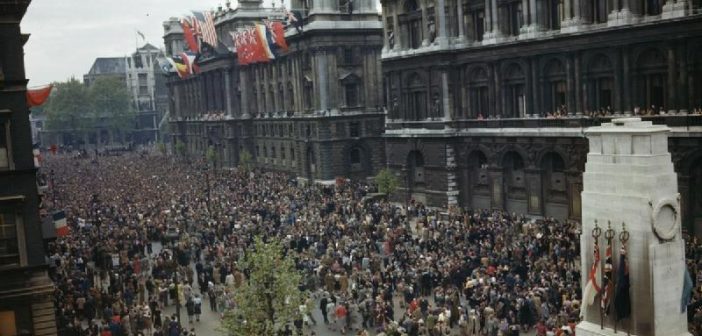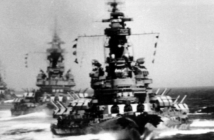“V-E,” or Victory in Europe, Day, first celebrated on May 8, 1945, marked the victory of the Allied powers in Europe, and, consequently, the dwindling down of World War II.
“V-E Day signified the end of a long road,” Jim Garamone of the Department of Defense writes. According to Garamone, 552,117 American service members (including 104,812 KIAs) died in Europe “just between June 1944 and May 8, 1945.”
After the announcement of Nazi Germany’s surrender, there was an outburst of joyful celebration throughout Europe, Garamone writes. The streets were inundated with crowds of people, cheering, carrying British and American flags, as well as posters of President Truman, as shown in a National Archives video published by the US Holocaust Memorial Museum. However, while these festivities ran rampant in Europe, there was little acknowledgement from troops stationed in the Pacific, as war against Japan continued, Garamone writes.
President Harry Truman took to the radio to broadcast the triumph. In his address, the audio of which was published online by the Associated Press, Truman stated that Gen. Dwight Eisenhower had informed him of Germany’s surrender to the United Nations.
“The flags of freedom fly all over Europe,” he said.
Truman also said he wished that President Franklin Roosevelt could have witnessed the moment, which he referred to as a “solemn, but a glorious, hour,” before his passing. The first V-E Day also coincided with Truman’s 61th birthday, according to the National Archives.
World War II officially ended on Sept. 2, 1945, known as “V-J,” or Victory in Japan, Day.
“The Japanese delegation signed a formal treaty of surrender to the Allied Forces aboard the U.S.S. Missouri on this date, officially ending World War II almost exactly six years after Germany had invaded Poland on September 1, 1939,” the Library of Congress writes.




